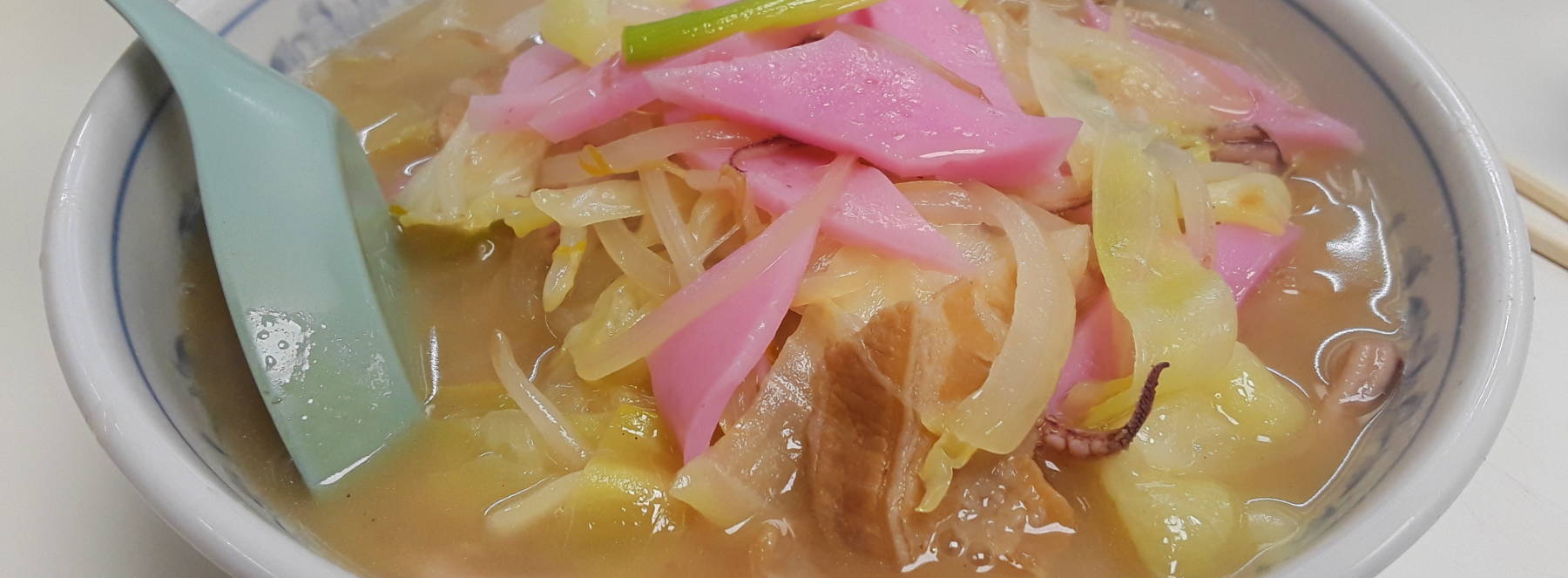
Eating in Nagasaki
China's Influence
After the Tokugawa shōgun banned all
Portuguese, the only foreign merchants allowed in Nagasaki
were the Dutch and the Chinese.
China obviously had a huge geographic advantage,
and they weren't as strictly controlled as the Dutch.
At times the population of Nagasaki may have been
as much as 30% Chinese.
Rāmen is a Chinese dish.
It's very popular and commonly available throughout Japan.
Places have their own local versions, like the
tonkotsu rāmen in
Fukuoka.
One of the specialties in Nagasaki is
chambon,
a more traditionally Chinese form of rāmen.
I'm in central Nagasaki.
There's a chambon shop across the way.
Let's get lunch!
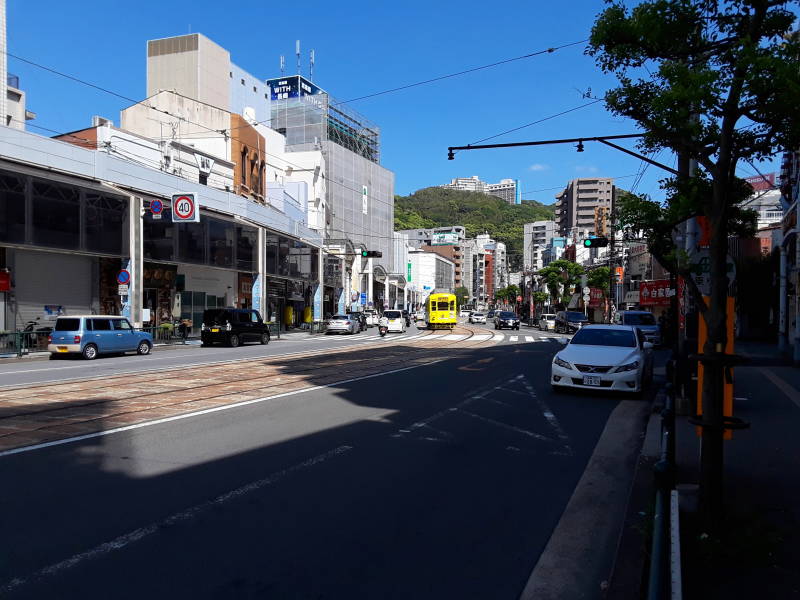
Champon
Champon is derived from some other language — Southern Min Chinese, or Malay or Indonesian. In Japanese the word must instead be chanpon, or チャンポン in the katakana used to phonetically spell foreign words. There it is, at the top right of the menu!
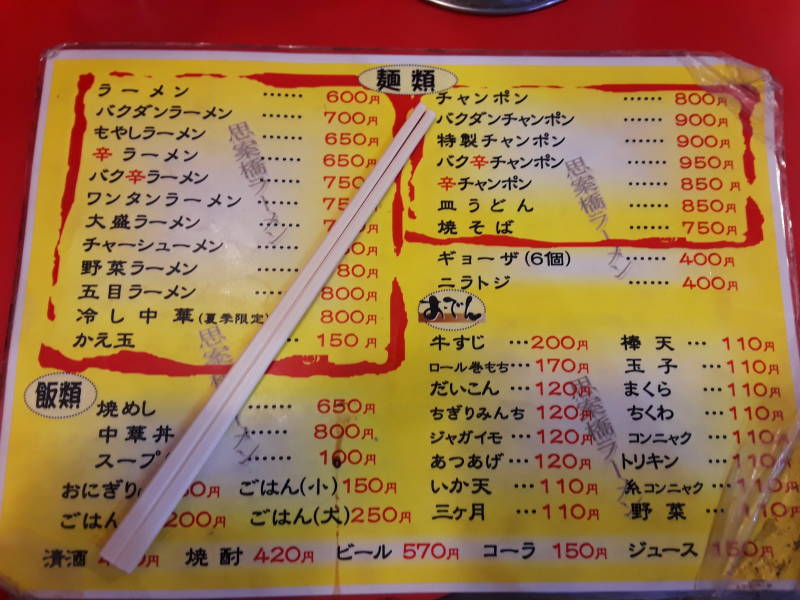
I'm seated at a counter in a busy soup shop.
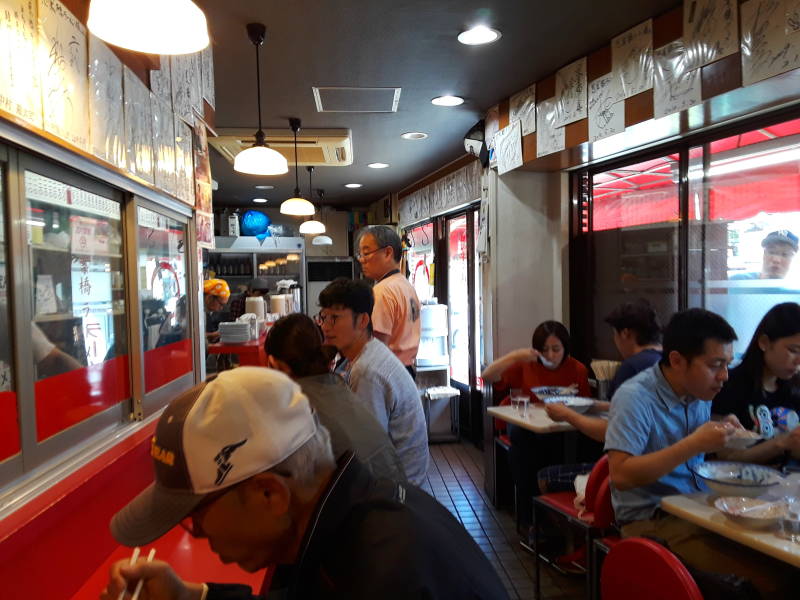
Here it is!
Champon is made with a soup based on chicken and pig bones. The rāmen noodles are boiled in that broth. Then fried seafood, vegetables, and pork are added.

On the Streetcar
On another day I'll take the streetcar from the train station to the center, then find a different chambon shop.
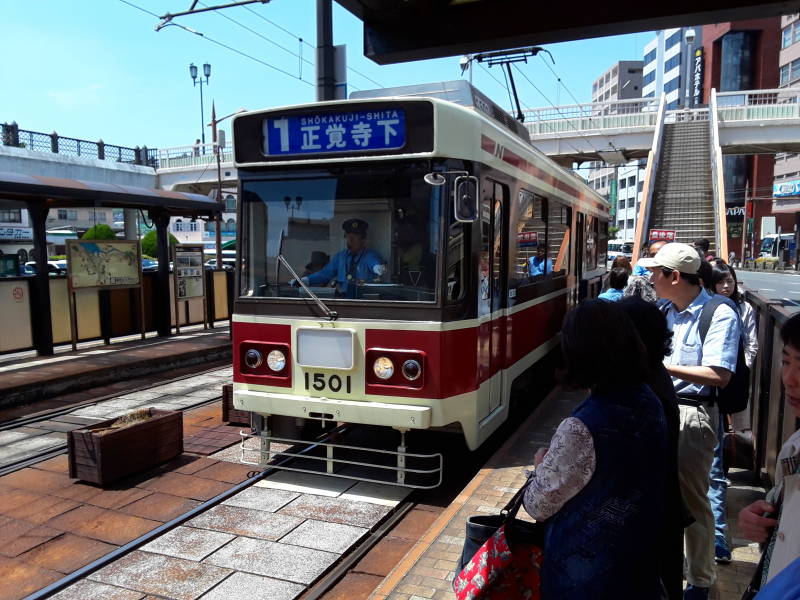
Enter at the rear, pay as you leave at the front.
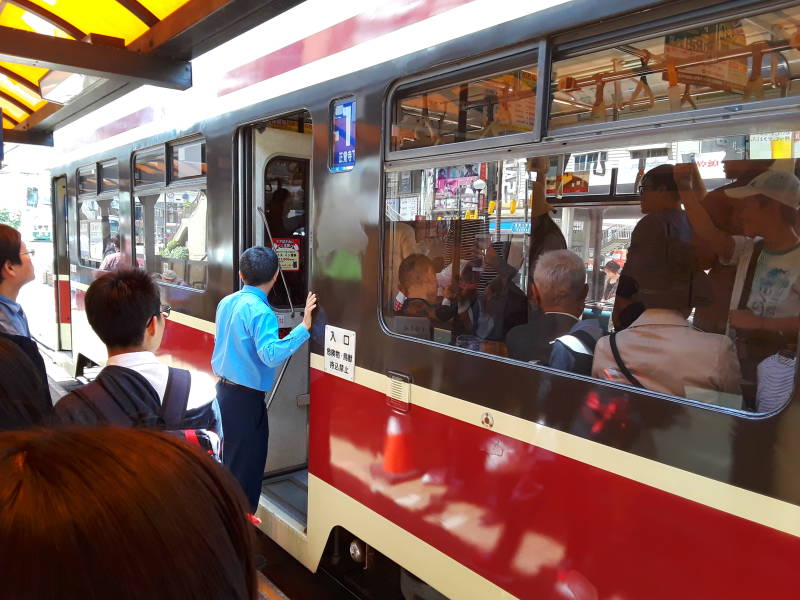
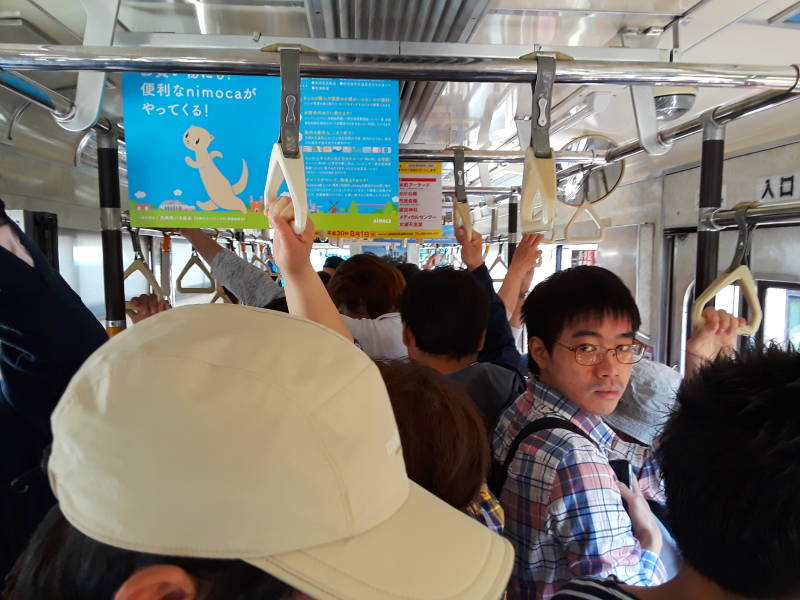
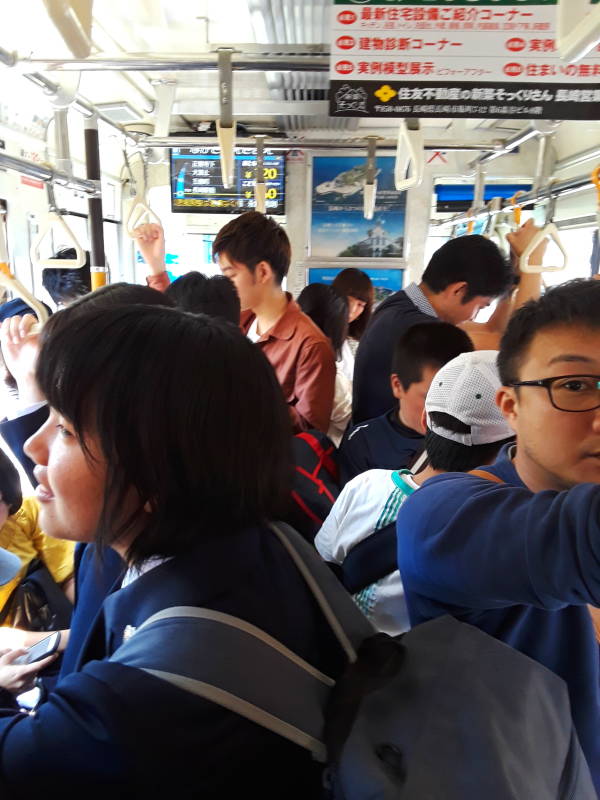
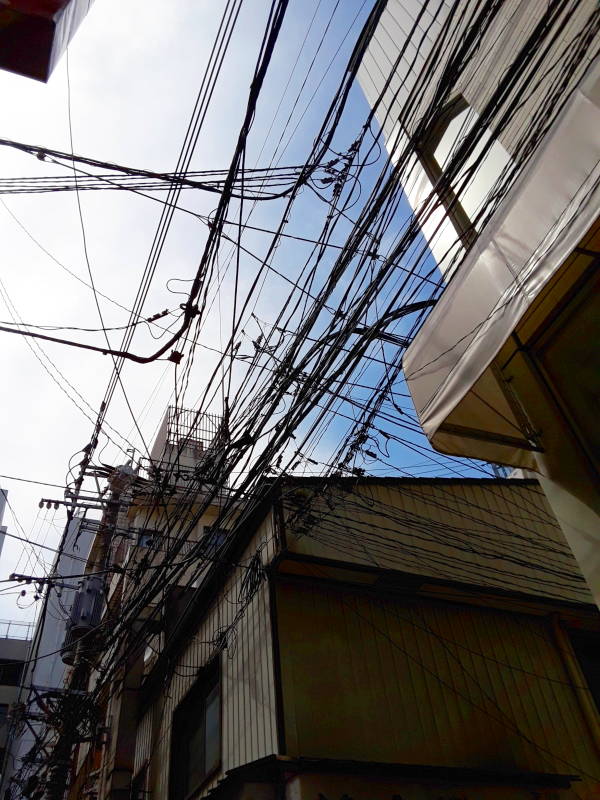
More Chambon
Here's the ミハ or Mi-Ha soup shop. The menu lists:
| ラーメハ | rāmen |
| チャンポン | chanpon |
| <kanji>うどん | <kanji> udon |
| ぎょうざ | gyoza |
| <kanji>そば | <kanji> soba |
| <kanji>めし | <kanji> meshi |
Hiragana
Three noodle dishes, fried or steamed dumplings, another noodle dish, and something that is a complete mystery to me.
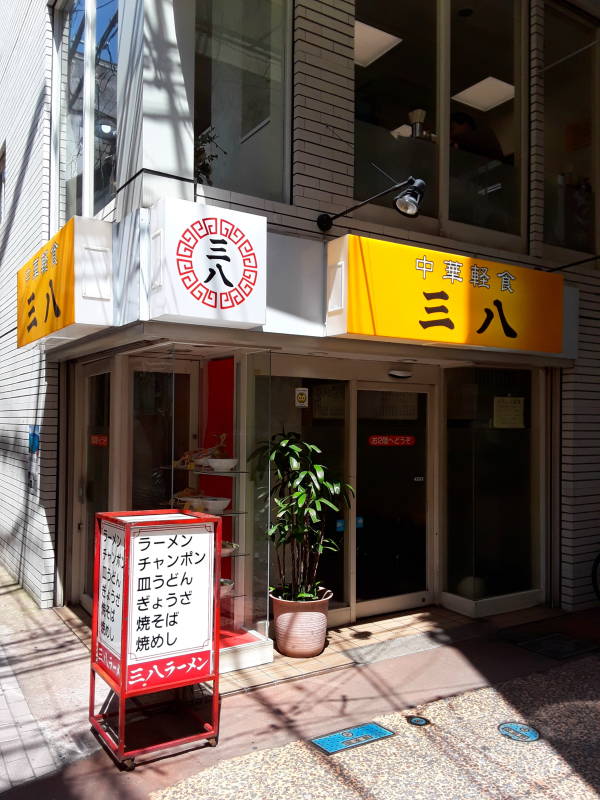
I'm seated at the counter, so I can watch the chambon chefs work their magic.
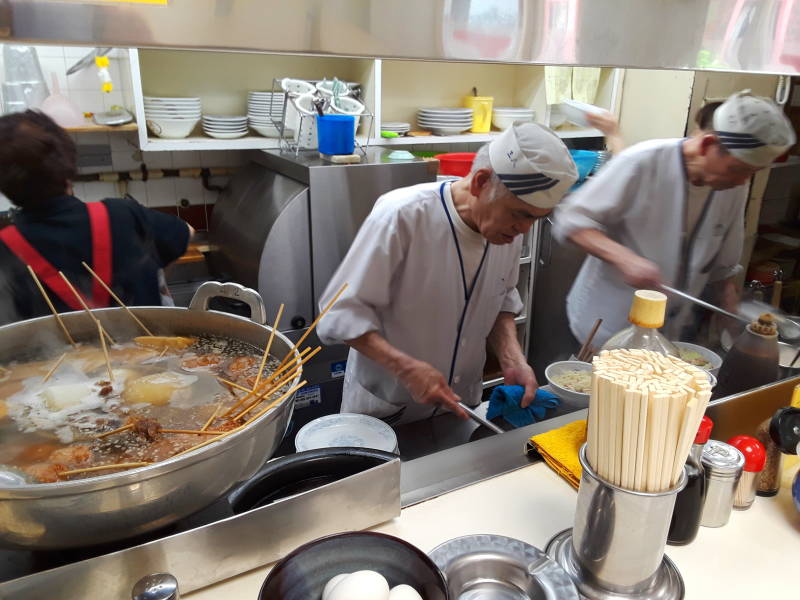
I can add a raw egg, or hot peppers.
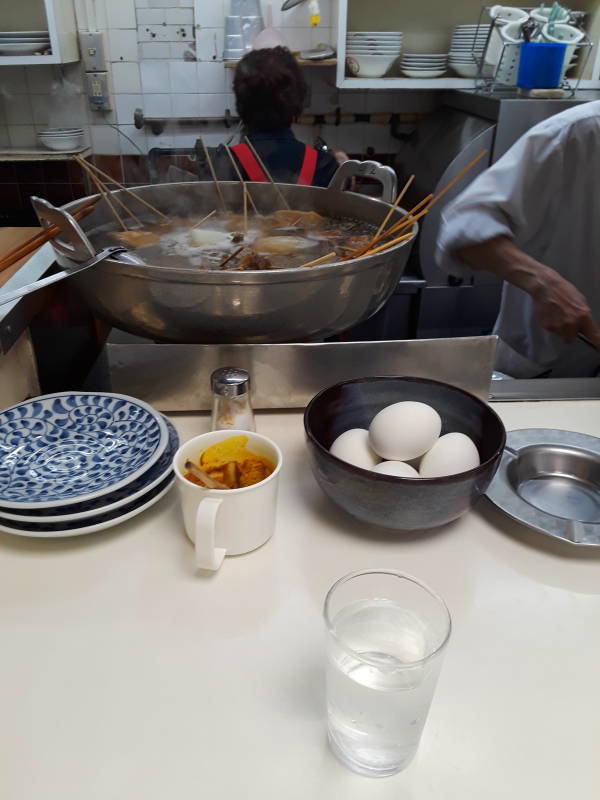
Here's the Mi-Ha version of chambon.
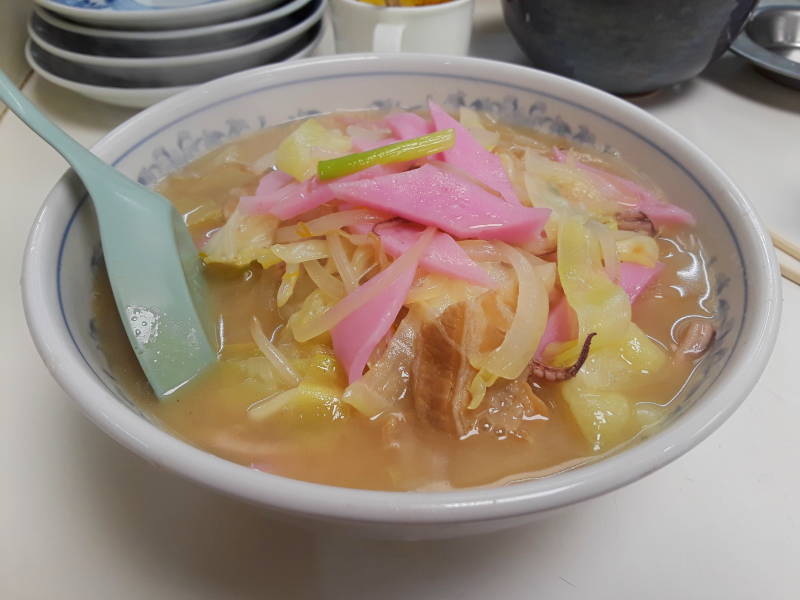
一 = 1
二 = 2
三 = 3
四 = 4
五 = 5
六 = 6
七 = 7
八 = 8
九 = 9
円 = yen
This place is a combination of far enough southwest in Japan and non-touristic enough to use Chinese numerals in the posted menu of drinks and side orders.
コーラ
一六〇円
ko–ra ¥160
ジユース
一六〇円
ju–su ¥160
ビール
五五〇円
bi–ru ¥550
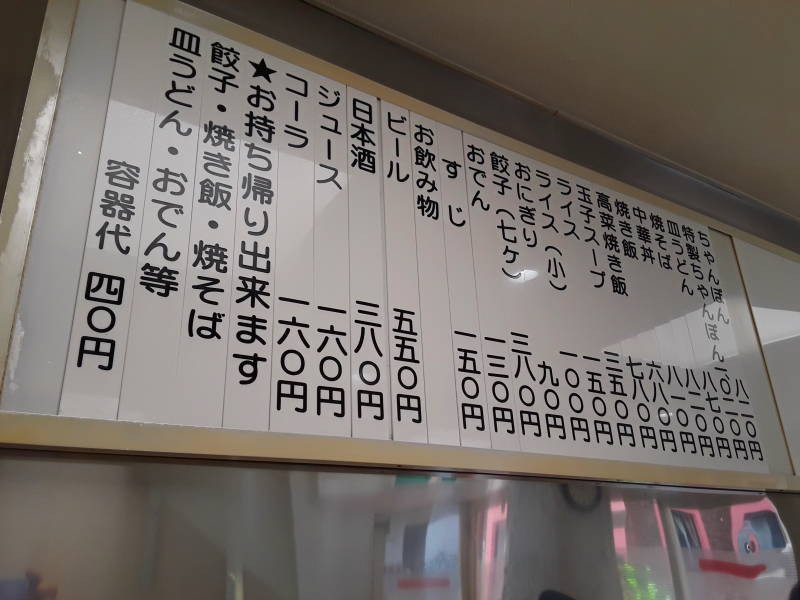
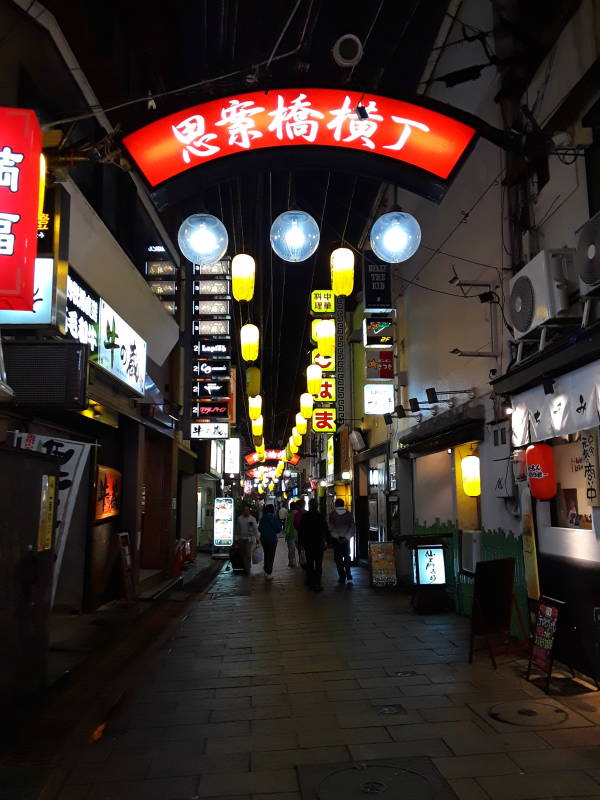
In the Evening
Unryutei Gyoza RestaurantNow for a late dinner.
I'm going to a great gyoza place I visited most of the evenings I was in Nagasaki.
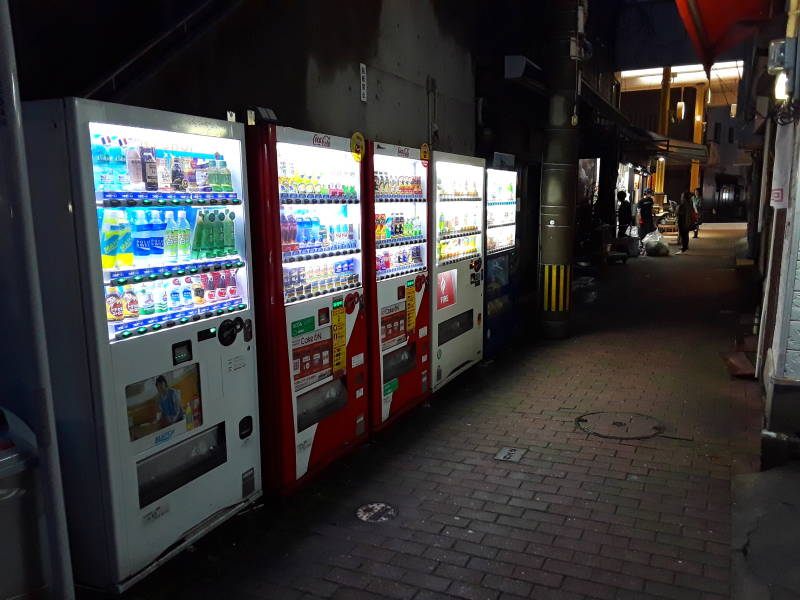
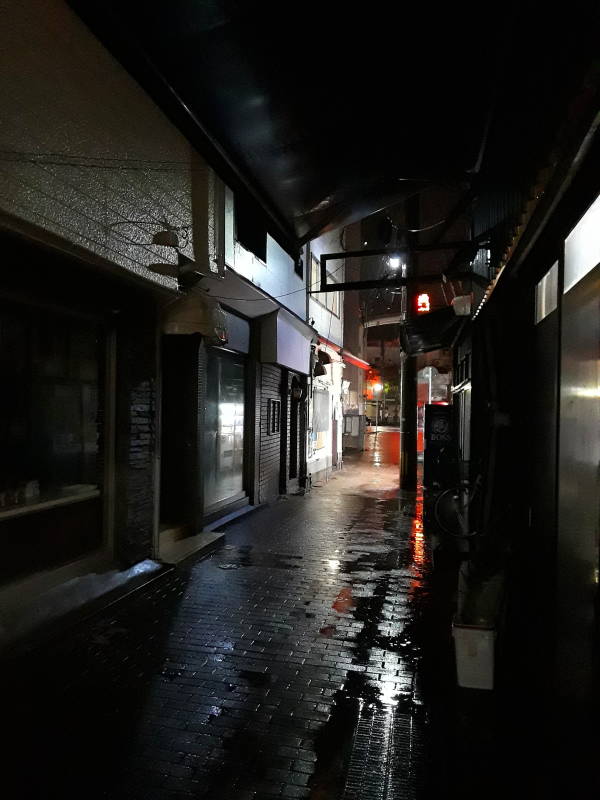
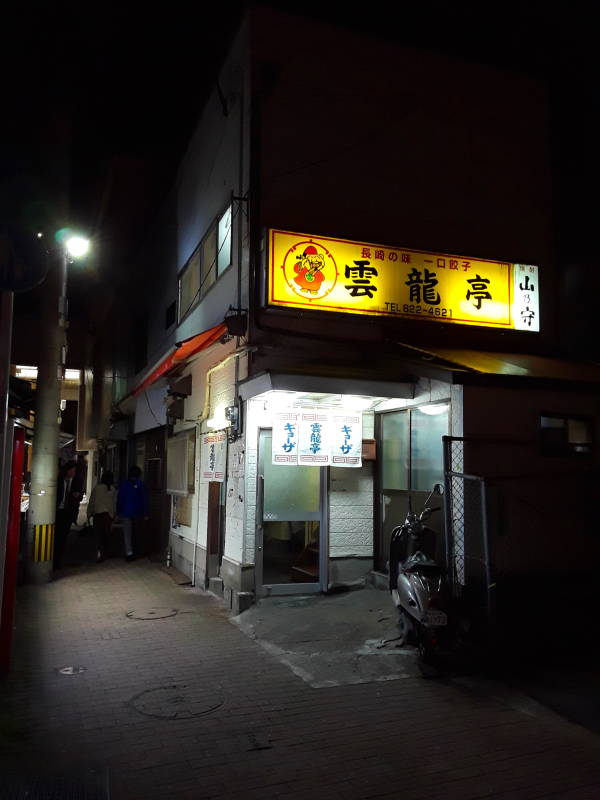
The entrance is the frosted glass door behind the banners with the magic word spelled out phonetically in katakana: ギヨーザ — gyo–za.
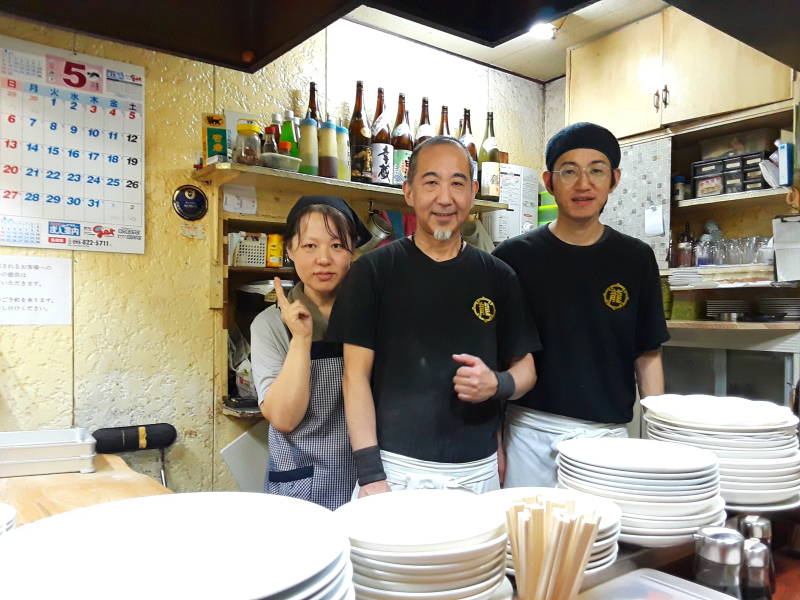
Above is the super friendly staff.
Below, that's me on the right.
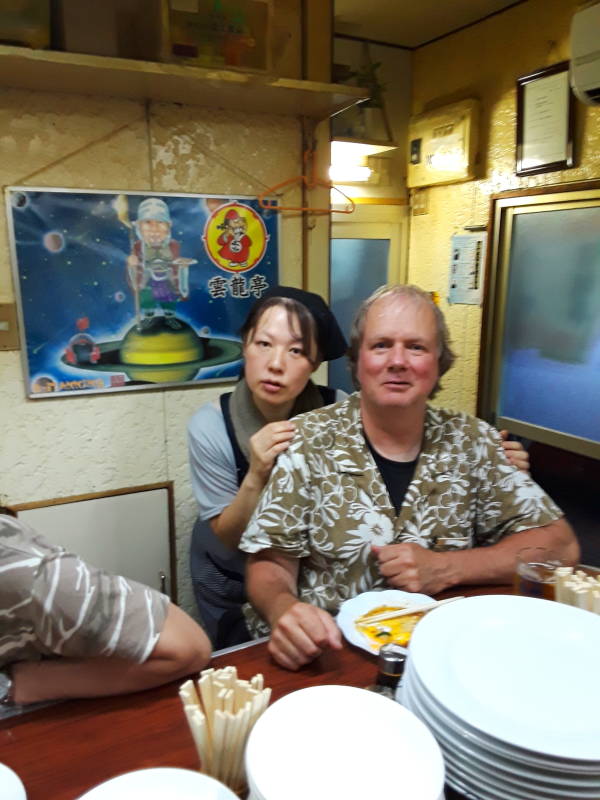
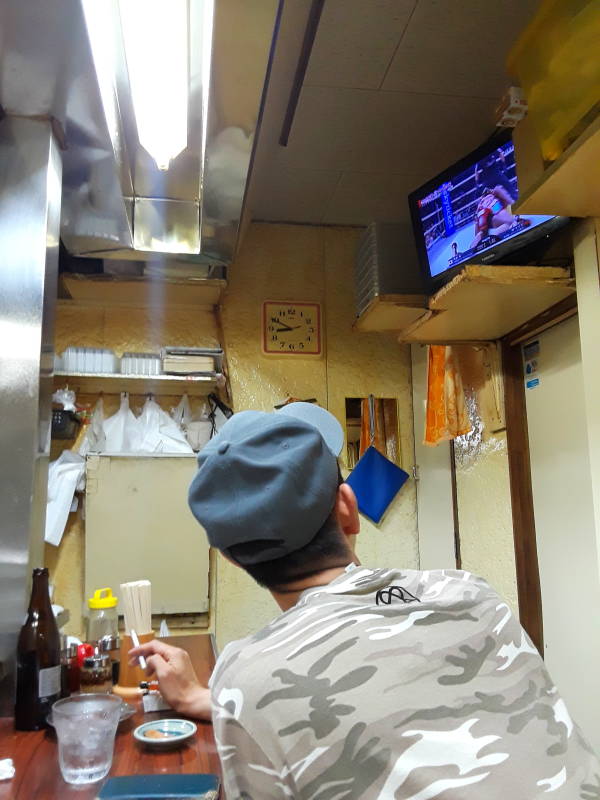
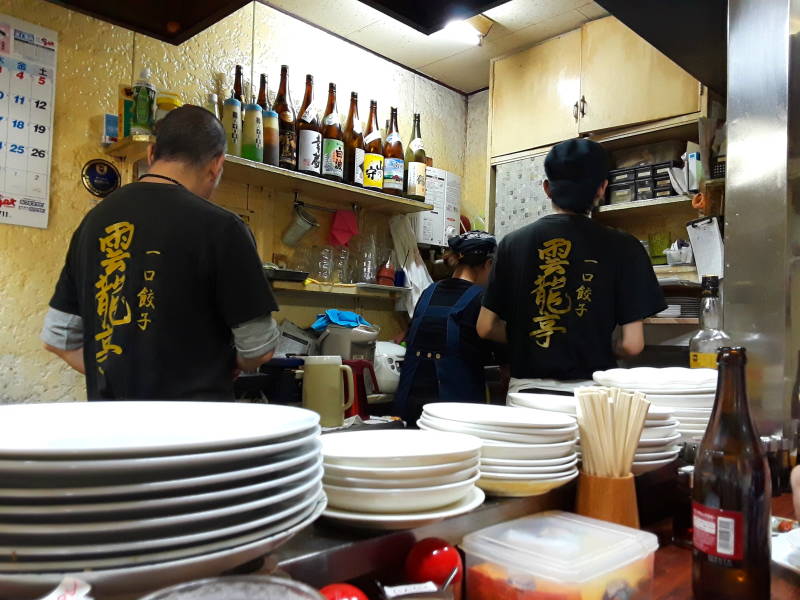
Some evenings I had gyoza, fried dumplings.
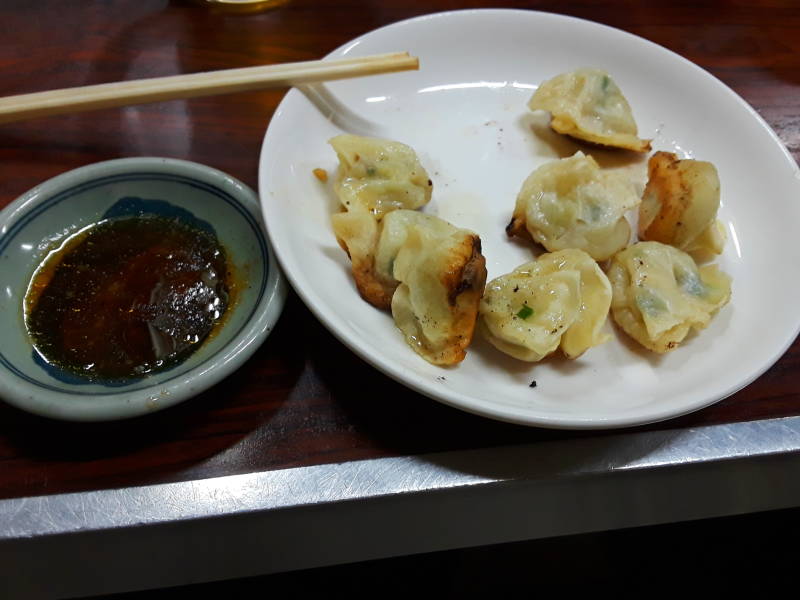
The little pitchers say ソース.
So–su.
Gyoza sauce.
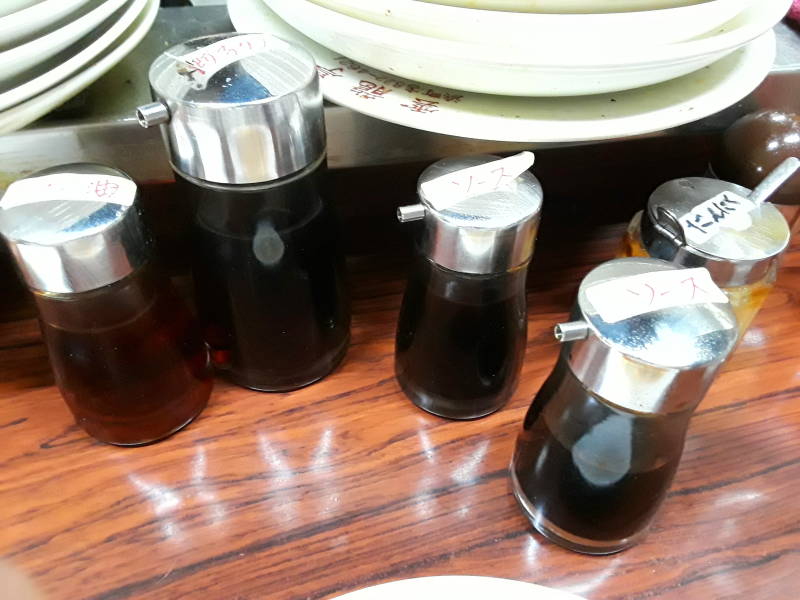
Other nights, オメル.
Omeru.
Or, gyoza and omeru.
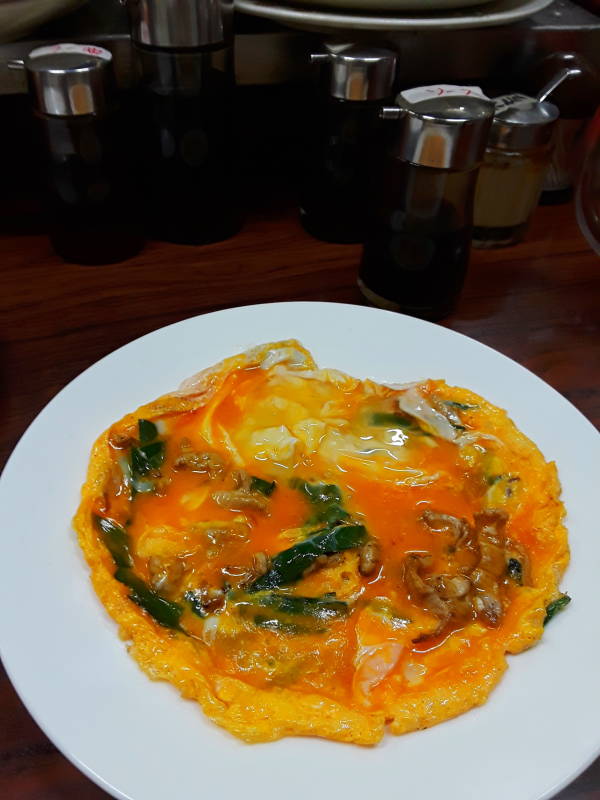
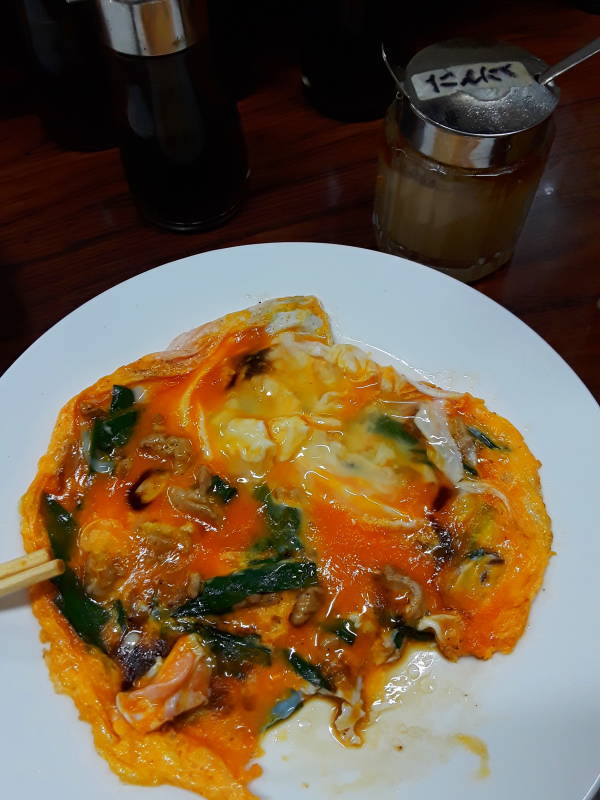
The above is specific to Nagasaki. Or maybe you want to explore other places in Japan.




































